This is the third in a series of posts about the Fujifilm GFX 100S. If you look on the right side of this page, scroll down to the Categories section, and select GFX 100S from the dropdown list, you can see all the reviews.
You can tell a lot about a camera without attaching a lens. The first 70 or 80 images I made with the GFX 100S were with the body cap still installed. In this post, I’ll show you some histograms of the dark field raw files under the following conditions, and tell you what I learned from them.
- EFCS
- 1/1000 second
- 14 bit
- Lossless compression
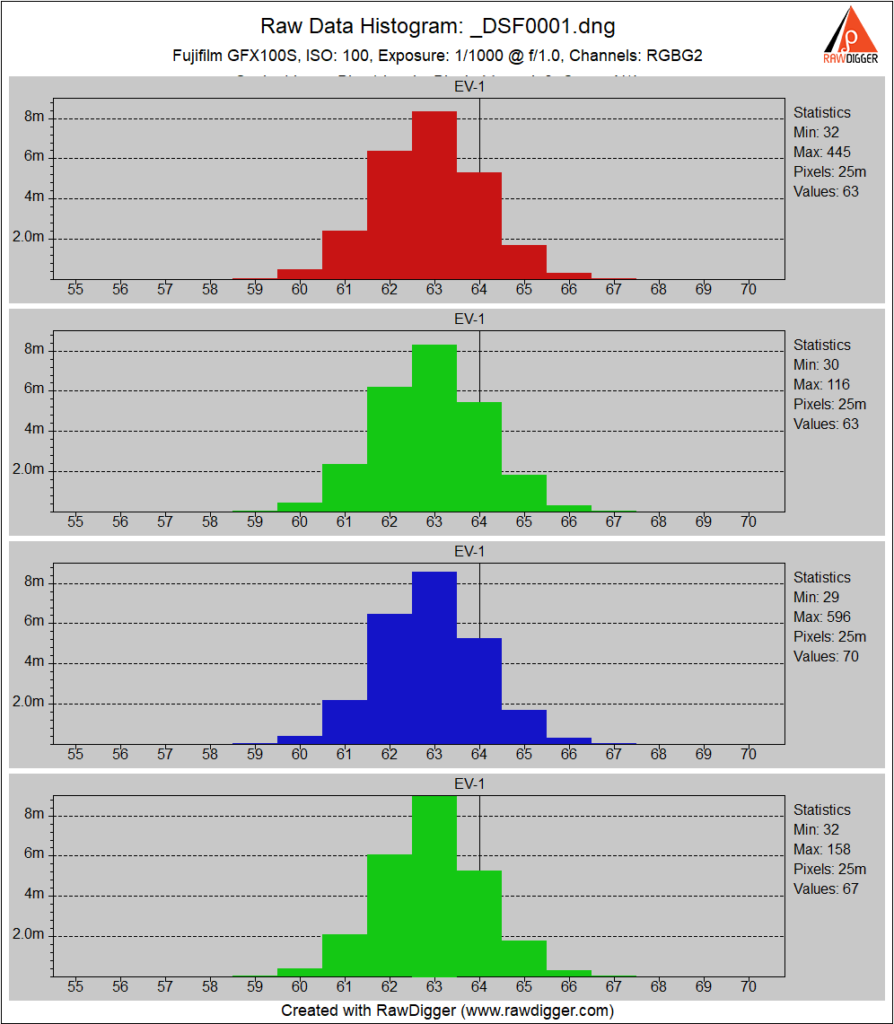
At base ISO, we see a tight histogram with the black point at a hair less than 63.
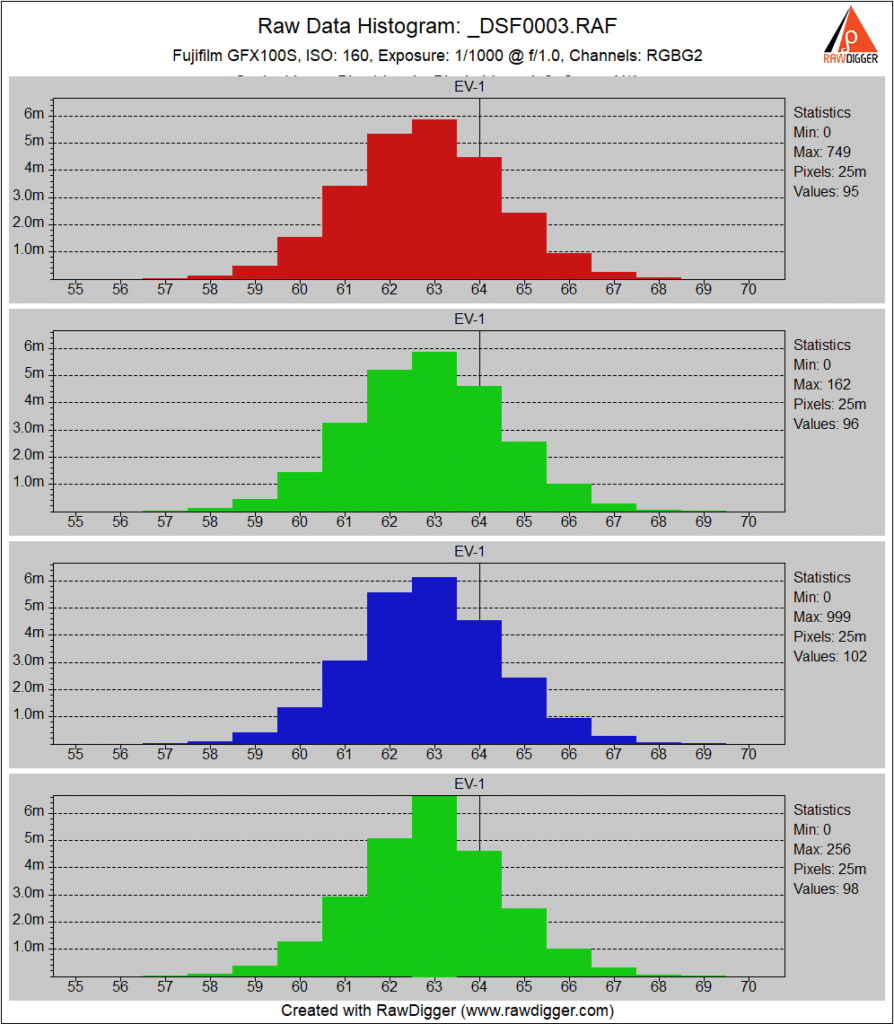
At ISO 160, the black point is the same, and the noise has increased slightly, as expected.
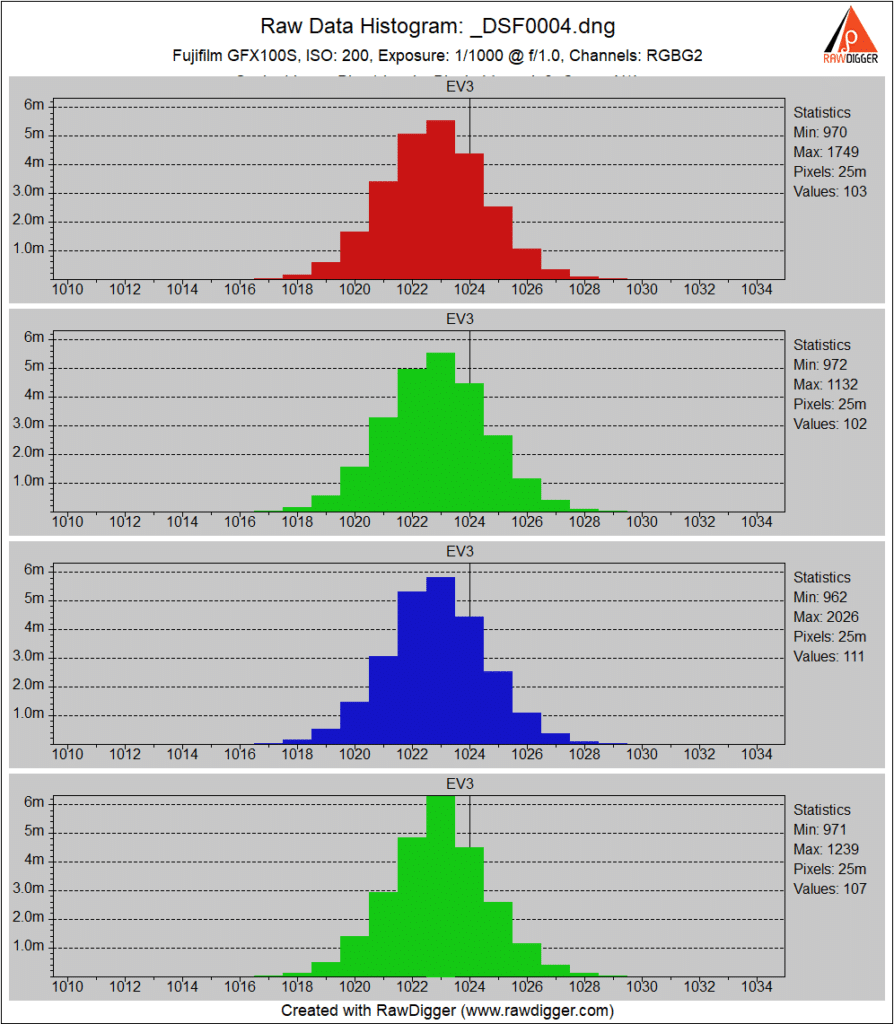
At ISO 200, the black point changes to a hari less than 1023. It stays there for all higher ISOs.
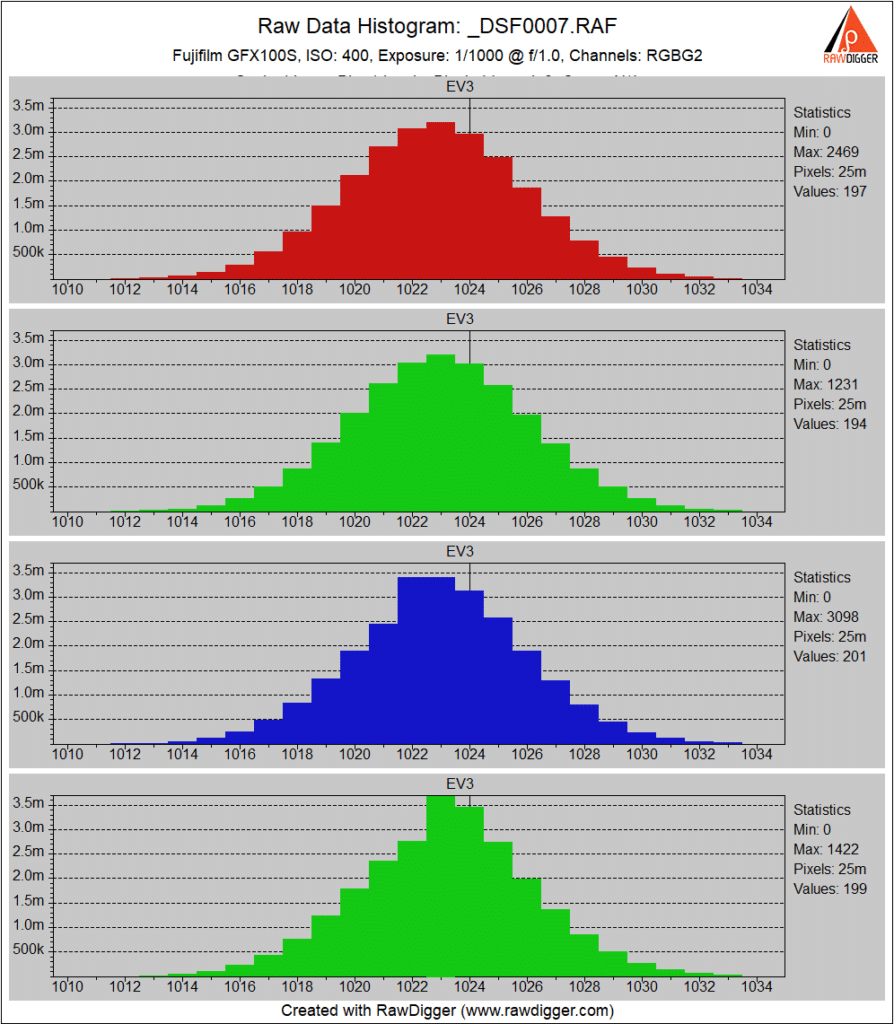
ISO 400 is the highest ISO before the conversion gain increases.
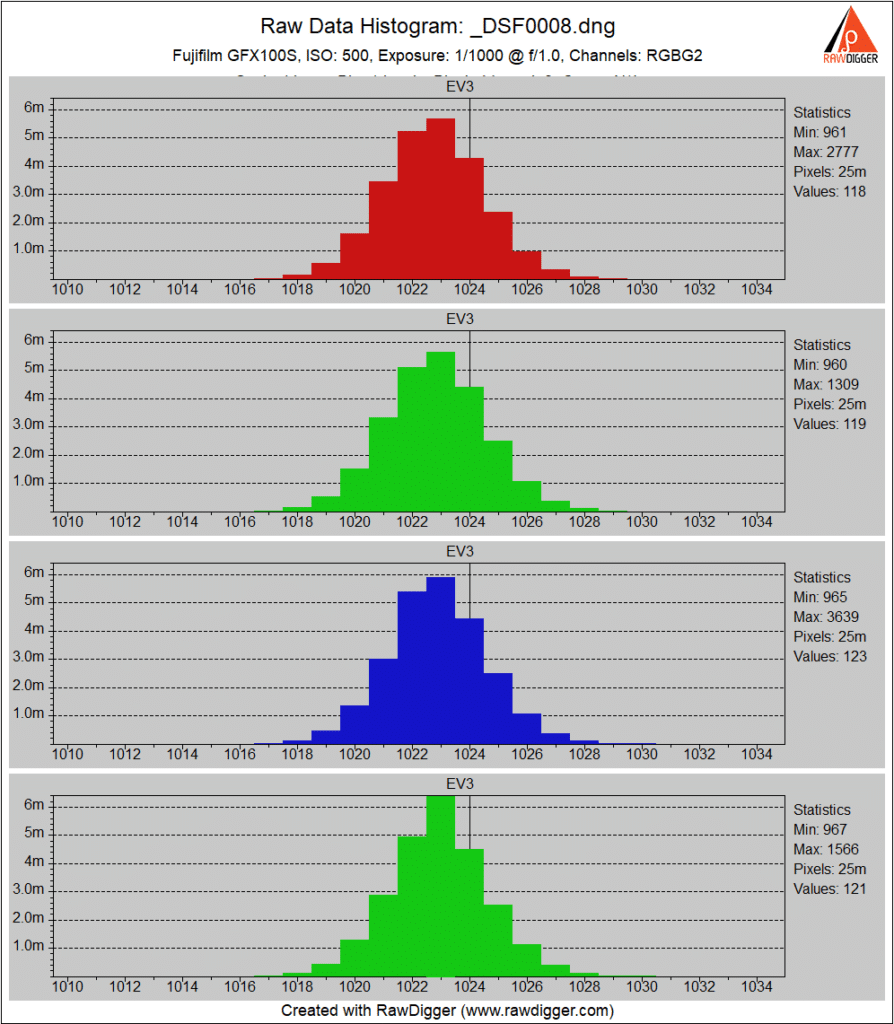
At ISO 500, you can see the effect of the increased conversion gain — the read noise goes down.
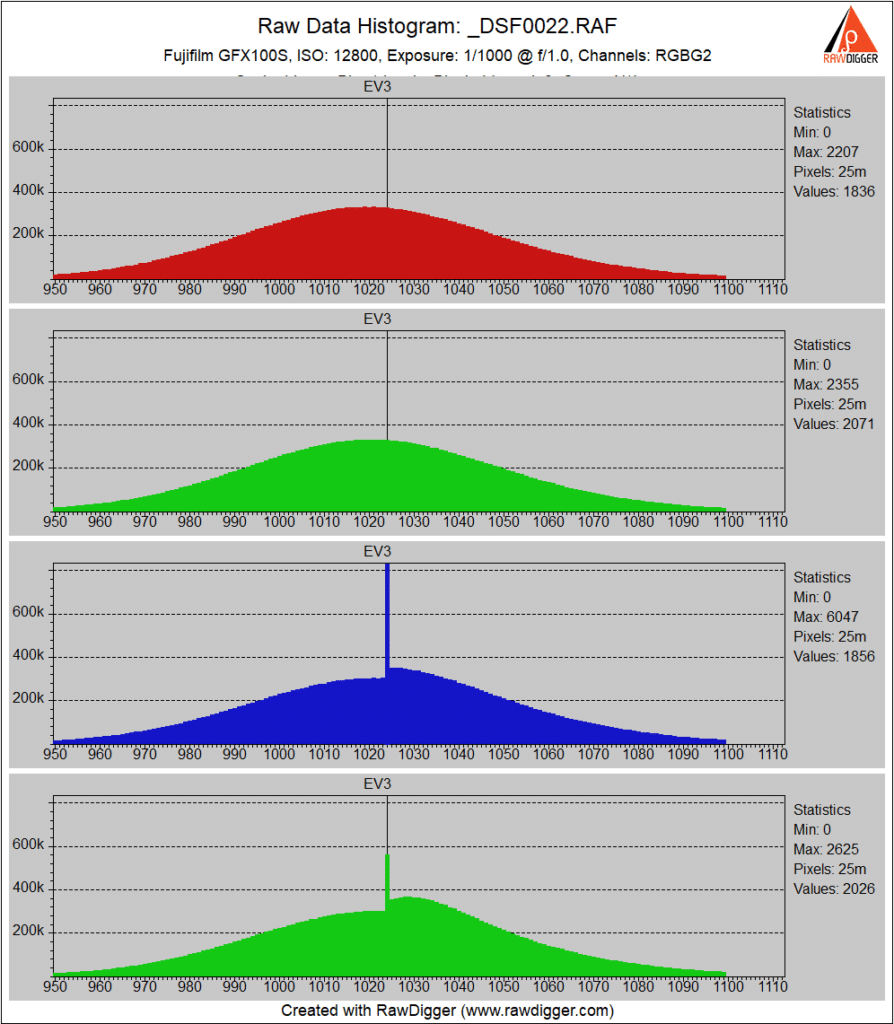
When the ISO gets high, it’s easy to see the effects of interpolation for on-sensor PDAF in the blue and second green channels. There is no sign of digital gain, though.
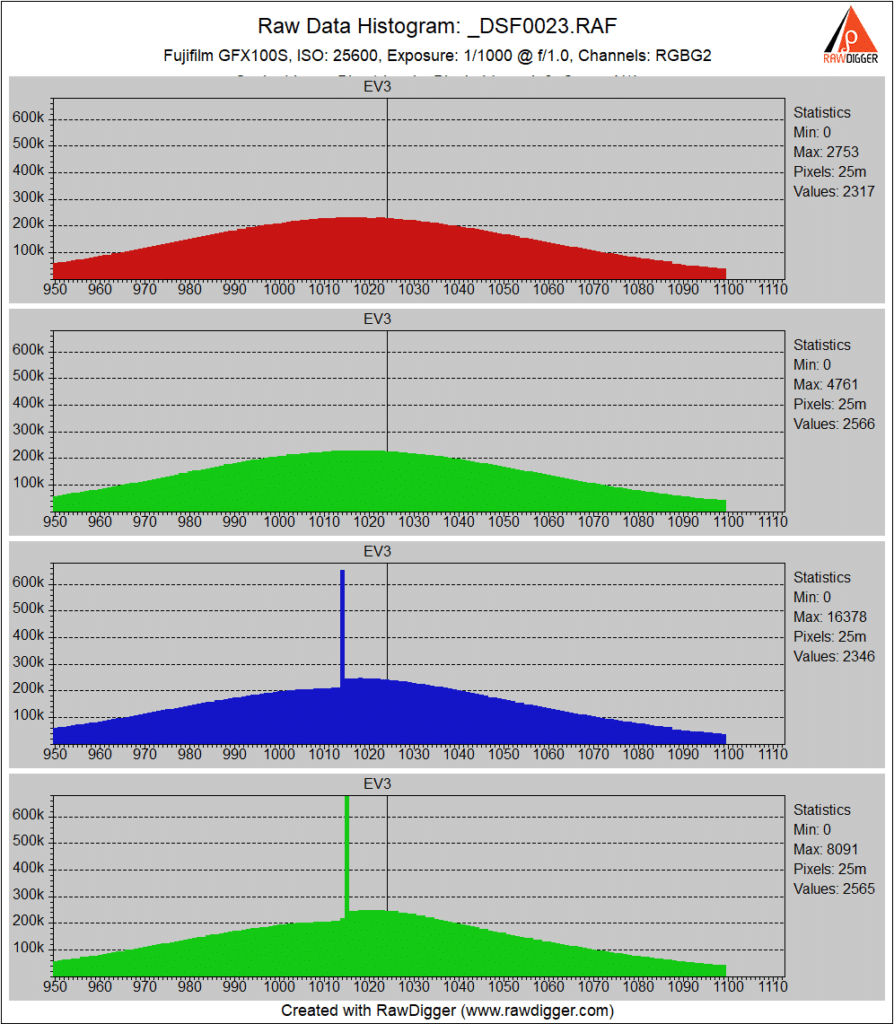
The histogram is fully populated at the first extended ISO. The black point has shifted to about 1014. If the raw developer doesn’t catch this, there will be shadow color shifts.
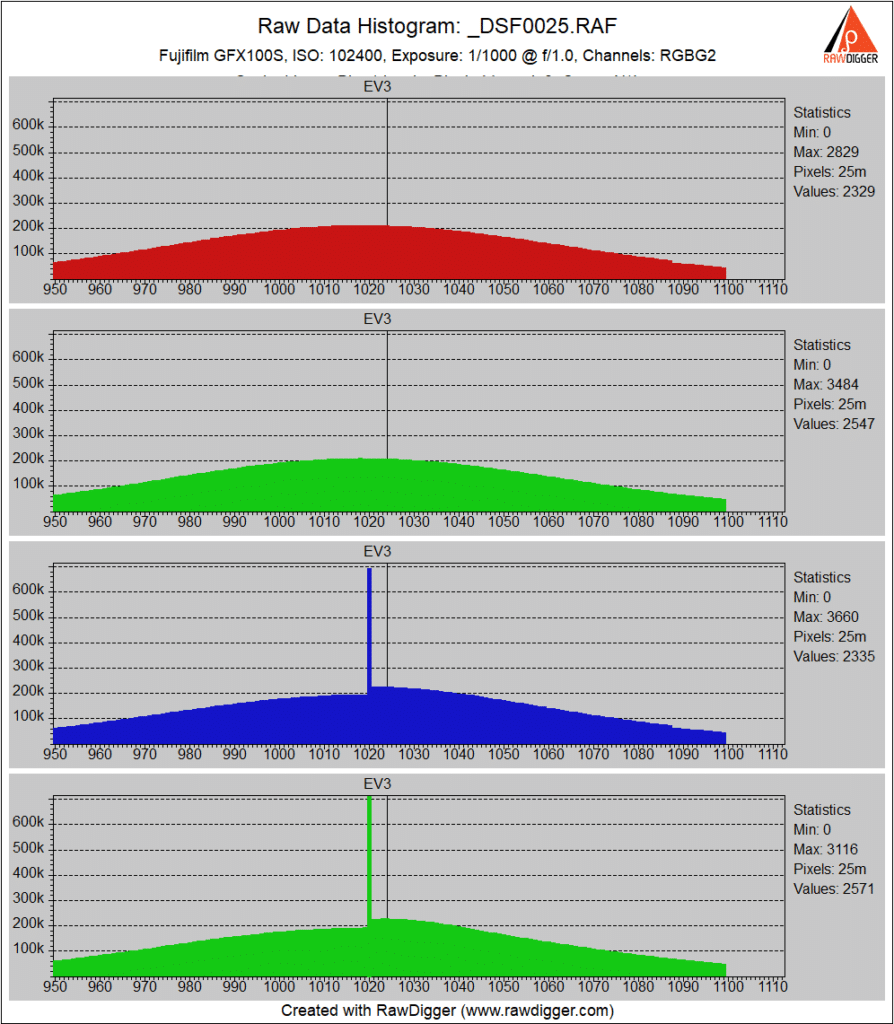
The black point is back up, but not quite to 1023.
Next up: read noise graphs at various shutter modes.
So based on the above for best IQ is ISO 400 the sweet spot?
No, because the input-referred read noise at ISO 400 is higher than that at ISO 500. As always, best image quality is at base ISO.
So after base ISO what is the next best higher ISO on the 100S?
125
Haha. Thanks.
If you need the speed, 500 is good, too. That’s the slowest high-conversion-gain ISO setting, and the camera is pretty much ISOless from there on up, so there’s not much reason other than finder brightness and raw developer hue twist to go beyond that.
Thanks for these plots!
I wonder though: given that the performance at 16-bits is so much different here (vs. GFX 100), does not it make sense to cover what happens at ISO=100 with 16-bit too?
The GFX 100 PDAF banding doesn’t materially affect the histograms unless you do them row by row.
Jim, I’m confused: I did not say anything about banding!
Just it seems that that this the first sensor which managed to work NOTISABLY better in 16-bits than in 14-bits. — So it may be beneficial to know more how this advantage actually looks like on noise histograms!
I’ll give it a look.
OK, it’s done:
https://blog.kasson.com/the-last-word/gfx-100s-16-bit-dark-field-histograms/